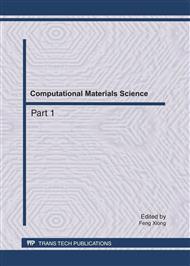p.892
p.898
p.904
p.908
p.913
p.919
p.924
p.930
p.934
Numerical Simulation of Sea Ice Compressional Strength with Discrete Element Model
Abstract:
The compressional strength of sea ice is a key parameter to determine the interaction between ice cover and offshore structure. In this study, the discrete element model (DEM) with particle bonding function is adopted to model the sea ice compressional strength. The bonding strength is set as a function of the ice temperature and ice salinity, and their influences on sea ice compressional strength are observed. The simulated results are compared well with the physical experimental data. With the improvement of this DEM, the ice load and ice-induced vibration of offshore structure can be simulated.
Info:
Periodical:
Pages:
913-918
Citation:
Online since:
July 2011
Authors:
Price:
Сopyright:
© 2011 Trans Tech Publications Ltd. All Rights Reserved
Share:
Citation:


